Rock music. The very words conjure images of roaring guitars, defiant anthems, and stadium-filling spectacle. But beneath the surface of the iconic riffs and charismatic frontmen lies a story far richer and more intricate than many casual listeners ever realize. This isn’t just about the chart-topping hits or the legendary live performances; it’s about the seismic shifts, the unexpected fusions, and the cultural currents that truly forged rock’s identity.
Indeed, to understand rock music is to embark on a journey through a relentless cycle of innovation and rebellion, drawing from an eclectic tapestry of sounds and social movements. It’s a genre that has constantly reinvented itself, absorbing influences from every corner of the musical landscape while simultaneously shaping the very fabric of popular culture. What started as a raw, rebellious sound quickly matured into a diverse sonic universe, giving voice to generations and embodying profound shifts in artistic expression.
So, let’s peel back the curtain and explore some of the most crucial, often understated, revolutions that shaped rock music into the global phenomenon it became. These are the behind-the-scenes transformations, the underlying forces that defined its essence and continue to resonate through its ever-evolving soundscape.
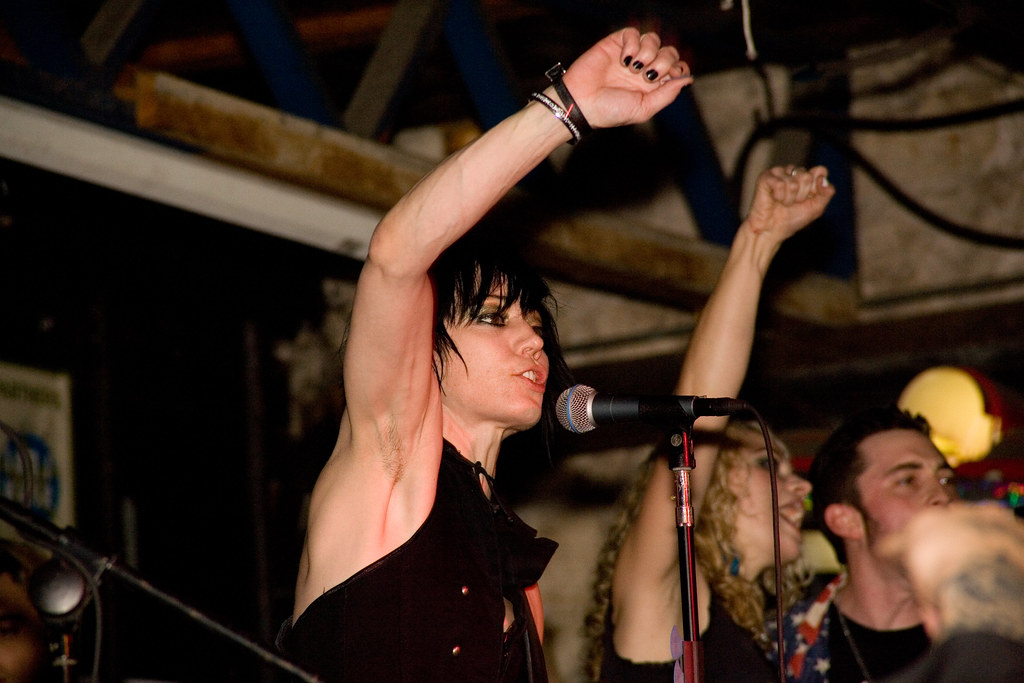
1. The Fused Foundations: Rock and Roll’s Unexpected Ancestry
Before rock music became the diverse beast we know today, it was born from a vibrant, often messy, fusion of sounds in the United States during the late 1940s and early 1950s. This nascent genre, then known as rock and roll, wasn’t a sudden invention but rather a brilliant melding of various existing styles. Imagine the soulful wail of rhythm and blues meeting the heartfelt storytelling of country and western – that’s where the magic truly began.
But the lineage goes even deeper than that initial blend. Rock and roll drew strongly from a broader palette, incorporating the raw energy of electric blues and the narrative depth of folk music. Even the sophisticated improvisations of jazz found their way into rock’s genetic code, contributing subtle but significant influences that would underpin its future complexity. This eclectic ancestry meant rock and roll was never a monolithic entity but a dynamic crossroads of American musical tradition.
The quest to pinpoint the definitive ‘first’ rock and roll record is a lively debate among enthusiasts, a testament to its composite origins. Was it Sister Rosetta Tharpe’s electrifying ‘Strange Things Happening Every Day’ from 1944, or Arthur Crudup’s ‘That’s All Right’ in 1946, a track later immortalized by Elvis Presley? Other strong contenders include Wynonie Harris’ ‘Good Rocking Tonight’ (1948) and Jackie Brenston and his Delta Cats’ ‘Rocket 88’ (1951), recorded by the legendary Sam Phillips.
Crucially, it was Cleveland disc jockey Alan Freed who, in 1951, began playing rhythm and blues—then controversially termed ‘race music’—to a multi-racial audience, and is widely credited with coining and popularizing the phrase ‘rock and roll’ to describe this exhilarating new sound. This cultural crossover was itself a revolution, breaking down racial barriers in entertainment and paving the way for a unified youth culture.
By 1954, Bill Haley’s ‘Rock Around the Clock’ solidified rock and roll’s mainstream arrival, becoming the first rock and roll song to top Billboard’s main charts. This success didn’t just break records; it blew the doors open for a whole new wave of popular culture, significantly curtailing the chart dominance of established crooners like Eddie Fisher and Perry Como. Rock and roll was here, and it was demanding attention.

2. The Electric Heartbeat: How Guitar, Bass, and Drums Became Rock’s Core
At the very core of rock music’s identity lies its distinctive sound, an auditory signature built around a specific constellation of instruments. The amplified electric guitar, emerging in its modern form in the 1950s alongside the explosion of rock and roll, quickly became the genre’s undeniable centerpiece. It wasn’t just an instrument; it was the voice of a generation, capable of both subtle melodies and blistering defiance.
The electric guitar’s prominence wasn’t accidental; it was greatly influenced by the trailblazing sounds of electric blues guitarists who had already harnessed its power. This foundational instrument found its rhythmic anchor in the electric bass guitar, an innovation that had previously pioneered new grooves in jazz music. Together, these strings were propelled by the percussive engine of the drum kit, a combination of drums and cymbals that provided rock’s driving beat.
This powerful trio of electric guitar, bass, and drums often served as the irreducible core of a rock band, but their sonic palette was frequently expanded. Keyboards, such as the grand piano, the swirling Hammond organ, and the futuristic synthesizer, were common additions, layering textures and harmonies that enriched the genre’s expressive capabilities. This basic instrumentation, directly derived from the electric blues band, proved to be incredibly versatile.
Consequently, a rock group typically consists of anywhere from three members, forming the potent ‘power trio,’ to five or more. Classically, a rock band often takes the form of a quartet, with members usually covering multiple roles: vocalist, lead guitarist, rhythm guitarist, bass guitarist, and drummer, often with an additional keyboard player or other instrumentalist filling out the sound. This structure allowed for both tight arrangements and dynamic improvisation, defining rock’s performance aesthetic.
Beyond the instruments themselves, rock music established its rhythmic bedrock with simple yet powerfully syncopated patterns in a 4/4 meter. The repetitive snare drum backbeat on beats two and four became an instantly recognizable hallmark, providing an irresistible pulse. Melodies, often drawing from ancient musical modes like the Dorian and Mixolydian, combined with diverse harmonic structures, from common triads to dissonant progressions, ensuring that rock’s sonic landscape was both accessible and endlessly inventive.
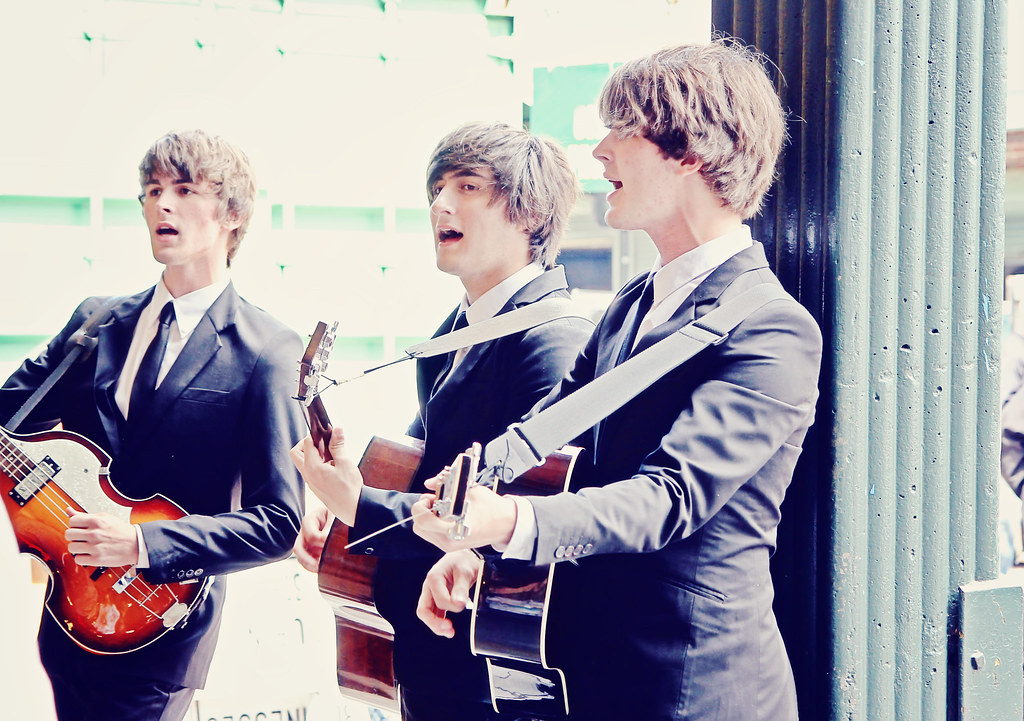
3. Beyond “Love Me Do”: Rock’s Lyrical Leap from Romance to Rebellion
While early popular music often confined itself to the relatively safe territory of romantic love, rock music, from its very inception, carved out a far broader lyrical scope. It wasn’t content to merely serenade; it sought to reflect and challenge the world around it. Its themes quickly expanded to encompass not only romantic love and expressions of uality but also audacious rebellion against the establishment, pressing social concerns, and critiques of various lifestyles.
This rich lyrical tapestry wasn’t woven from scratch; it inherited threads from a diverse array of sources. The sophisticated songcraft of the Tin Pan Alley pop tradition provided a framework for melodic storytelling, while the raw honesty of folk music infused rock with a sense of social consciousness. And, of course, the vibrant narratives found in rhythm and blues contributed to rock’s capacity for powerful, direct expression, ensuring its stories resonated deeply.
Music journalist Robert Christgau, a keen observer of popular culture, once characterized rock lyrics as a ‘cool medium.’ He noted their reliance on simple diction and repeated refrains, emphasizing that rock’s primary ‘function’ often ‘pertains to music, or, more generally, noise.’ This perspective highlights how the sound itself, the sheer visceral impact of the music, often conveyed as much meaning as the explicit words, creating a powerful, holistic experience for the listener.
Crucially, rock and roll was fundamentally ‘conceived as an outlet for adolescent yearnings.’ It was a genre that articulated the specific anxieties, desires, and frustrations of a young generation finding its voice. Christgau further elaborated, stating that ‘To make rock and roll is also an ideal way to explore intersections of , love, violence, and fun, to broadcast the delights and limitations of the regional, and to deal with the depredations and benefits of mass culture itself.’ It was a mirror held up to youth culture, reflecting its complexities.
The early predominance of white, male, and often middle-class musicians in rock music has been a subject of ongoing discussion, leading to observations that rock initially served as an appropriation of Black musical forms for a primarily young, white, and male audience. Consequently, it often articulated the concerns of this specific demographic, both in its style and lyrical content. Christgau, writing in 1972, noted that, despite exceptions, ‘rock and roll usually implies an identification of male uality and aggression,’ revealing a significant, if often unstated, aspect of its early appeal and thematic focus.
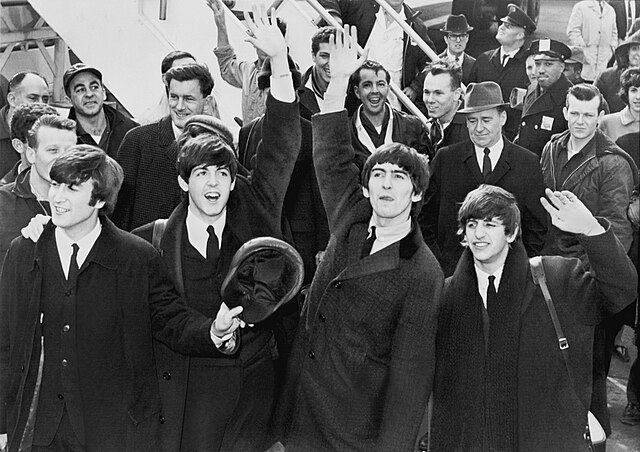
4. The Album’s Ascendancy: How The Beatles Shifted Rock’s Creative Center
In the mid-1960s, a quiet but profound revolution began to reshape the very nature of recorded music expression and consumption within the rock world. Rock musicians started to elevate the album beyond merely a collection of singles, transforming it into the dominant artistic statement. This shift marked a maturation of the genre, moving from ephemeral pop hits to more cohesive, sustained artistic endeavors.
At the forefront of this monumental development, the Beatles played an unparalleled role. Their innovative approach to album creation, treating each record as a unified work rather than just a showcase for singles, profoundly influenced the industry. Their contributions were instrumental in lending rock music a newfound cultural legitimacy in the mainstream, demonstrating its capacity for complex artistry and thematic depth.
This era, often referred to as the ‘rock-informed album era,’ would dominate the music industry for several decades, cementing the album as the primary vehicle for artistic ambition. It fostered a listening culture where sustained engagement with an artist’s complete vision became paramount, a stark contrast to the fleeting nature of single-driven pop music. This was a deeper dive, requiring more from both artist and audience.
Indeed, as the term ‘rock’ began to be used more frequently than ‘rock and roll’ from the late 1960s onwards, it increasingly stood in contrast to pop music, despite their shared characteristics. Rock consciously distanced itself, emphasizing a commitment to musicianship, the raw energy of live performance, and a focus on more ‘serious and progressive themes.’ This wasn’t just a stylistic choice; it was an ideological stance rooted in an ‘authenticity’ often combined with a deep awareness of the genre’s own history and development.
According to music critic Simon Frith, rock evolved into ‘something more than pop, something more than rock and roll.’ He insightfully noted that ‘rock musicians combined an emphasis on skill and technique with the romantic concept of art as artistic expression, original and sincere.’ This profound shift positioned rock not just as entertainment, but as a genuine art form, capable of complex narratives and profound emotional resonance, pushing the boundaries of popular music in unprecedented ways.
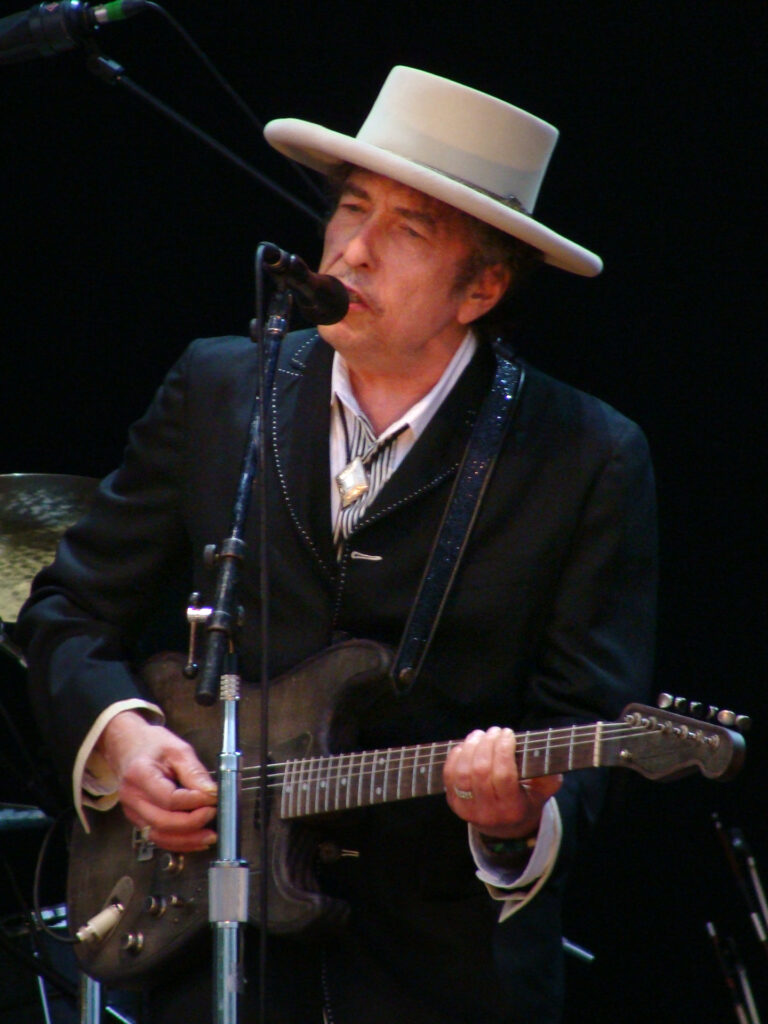
5. The Psychedelic Dawn: Rock’s Dive into Counterculture and Genre Blending
The late 1960s ushered in what many fondly remember as the ‘classic rock’ period, a vibrant and experimental era where the genre truly blossomed into an astonishing array of subgenres. This was a time of unprecedented creative ferment, where the boundaries of what rock could be were constantly pushed and redefined. It was a kaleidoscope of sounds and ideas, reflecting the radical social changes of the time.
During this fertile period, numerous hybrid forms emerged, showcasing rock’s remarkable adaptability. Blues rock injected raw, soulful power into the genre, while folk rock brought lyrical introspection and acoustic textures to the forefront. Country rock blended twangy guitars with rock’s driving beat, and Southern rock carved out its own powerful, regional identity. Even more exotic fusions like raga rock and jazz rock hinted at rock’s global aspirations and sophisticated musical ambition.
These diverse strands weren’t just musical experiments; they critically ‘contributed to the development of psychedelic rock,’ a genre deeply intertwined with the burgeoning countercultural movements of the era. Influenced by the ‘psychedelic and hippie scene,’ rock music became the soundtrack to a generation exploring new freedoms, challenging norms, and seeking altered states of consciousness. The music itself mimicked these journeys, with extended jams and mind-bending sonic effects.
Globally, rock’s reach expanded rapidly from its American origins, propelled by the sweeping Americanization that followed the Second World War. The British Invasion, a phenomenon that saw British rock groups, heavily influenced by blues-rock pioneers, developing a style with ‘an intensity and drive seldom found in white American acts,’ further diversified the genre. Bands like the Beatles and the Rolling Stones brought new energy and sophistication, turning rock into an international language of rebellion and innovation.
More than just a collection of songs, rock had become ‘the vehicle for cultural and social movements,’ fundamentally shaping society. It spawned major subcultures like the mods and rockers in the U.K., and most notably, the widespread hippie movement and the broader Western counterculture that emanated from San Francisco in the U.S. in the 1960s—a movement whose echoes continue to resonate today. This was music with a mission, an undeniable force of cultural transformation.
Building on the kaleidoscopic foundations laid in the 1960s, rock music didn’t just stand still; it surged forward, fragmenting into a dazzling array of styles that pushed artistic boundaries and ignited fierce cultural debates. The journey continued, each new wave a reaction, a refinement, or a radical departure from what came before. This next chapter of rock’s saga explores the explosive birth of aggressive sounds, the defiant snarl of punk, and the ever-shifting landscape of alternative movements that cemented rock’s place as a perpetual cultural barometer.
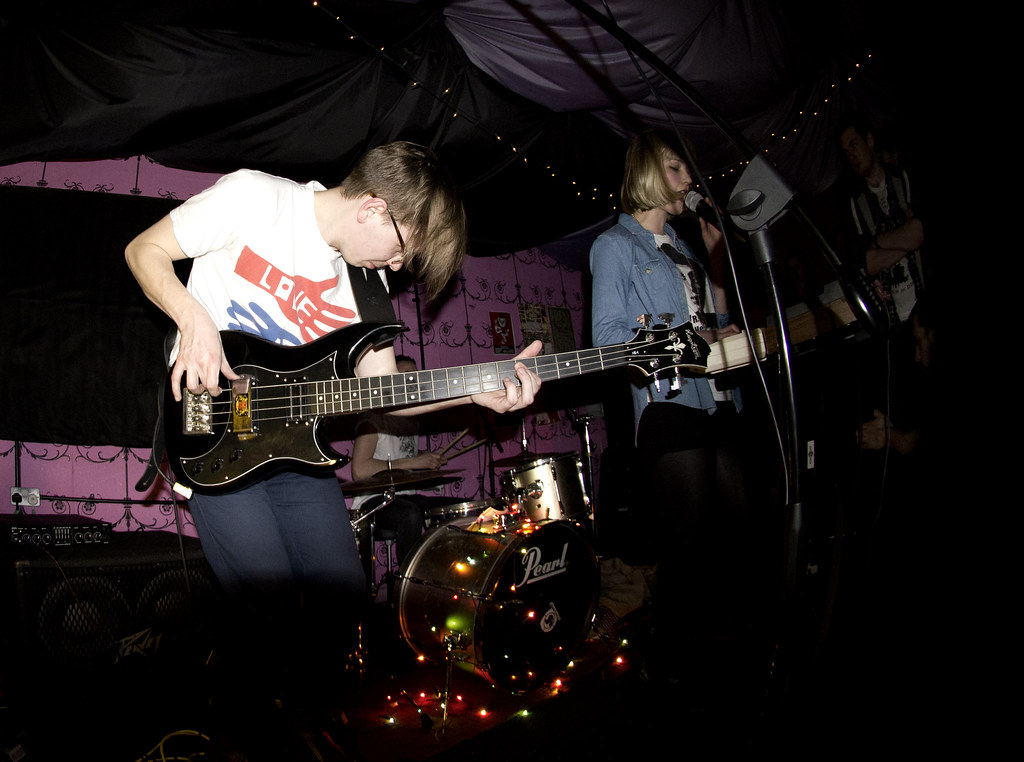
6. The Heavy & The Avant-Garde: Forging New Artistic and Aggressive Frontiers
As the 1960s waned, rock’s creative ferment didn’t dissipate; instead, it intensified, giving rise to distinct subgenres that took the genre in wildly different directions. New genres that emerged included progressive rock, which extended artistic elements, transforming rock into something more complex and ambitious. This movement was characterized by lengthy compositions, intricate musical structures, and often virtuoso instrumentalism, borrowing from classical music and jazz to create a grander, intellectual scope previously uncommon in popular music.
Simultaneously, a raw, unbridled energy coalesced, manifesting as heavy metal. This wasn’t just loud; it was an aggressive, thick sound, often built on distorted guitar riffs, pounding drums, and commanding vocals. Heavy metal channeled a visceral intensity, focusing on themes from the fantastical to the darker aspects of human experience, laying the groundwork for countless future iterations of hard rock.
And then there was glam rock, a truly flamboyant spectacle that shifted focus from purely musical innovation to theatricality and visual style. Glam artists blurred gender lines, embraced extravagant costumes, makeup, and outrageous stage personae, making performance an integral part of the musical experience. This subgenre reveled in showmanship, injecting a much-needed dose of escapism and playful rebellion into the rock scene.
These divergent paths – the progressive, the metallic, and the glamorous – broadened rock’s expressive potential. They demonstrated that the genre was not confined to a single aesthetic but was a vast, adaptable canvas for a multitude of artistic visions, cultivating devoted fanbases and profoundly influencing subsequent generations.
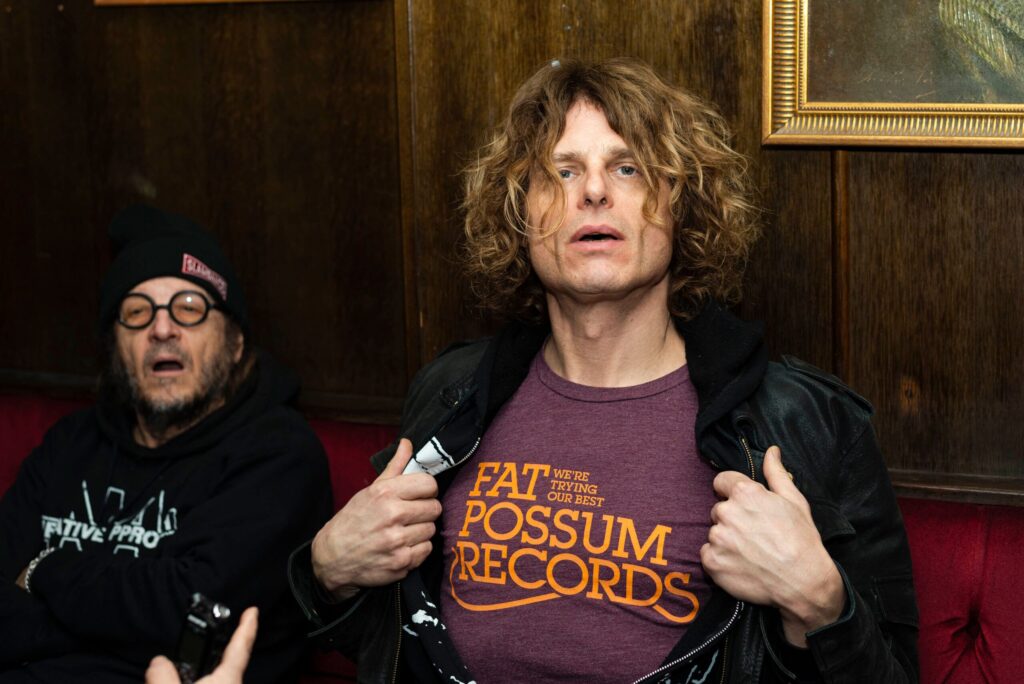
7. Punk’s Ferocious Backlash: Stripped-Down Energy and Social Critique
The mid-1970s witnessed a seismic shift, a raw and defiant reaction against the perceived excesses and grandiosity of progressive and arena rock. This was punk rock: a stripped-down, energetic, and often furious backlash that deliberately rejected virtuosity and commercial polish in favor of raw authenticity and immediate impact. It was a call to arms for those disillusioned with the mainstream, embodying a profound sense of urgency and youthful angst.
Punk’s musical simplicity was its strength; short, fast, three-chord songs delivered with unbridled aggression and an unapologetic amateurism became its hallmark. Beyond the music, punk was a powerful cultural force, producing sharp social and political critiques. Its lyrics often railed against societal norms, governmental authority, and consumerism, giving voice to a generation’s frustration and desire for radical change.
The movement also fostered a DIY ethos, encouraging self-production, independent labels, and fanzines. This democratizing approach empowered countless young artists to express themselves, regardless of technical skill, fundamentally reshaping the music industry’s power dynamics. Bands like The Ramones and Sex Pistols became icons, not just for their music, but for embodying a rebellious spirit.
The impact of punk reverberated far beyond its initial explosion. It wasn’t just a genre; it was a mindset, a cultural reset that cleared away complacency and paved the way for new forms of expression. Its insistence on honesty and directness proved foundational for much of the rock music that followed.
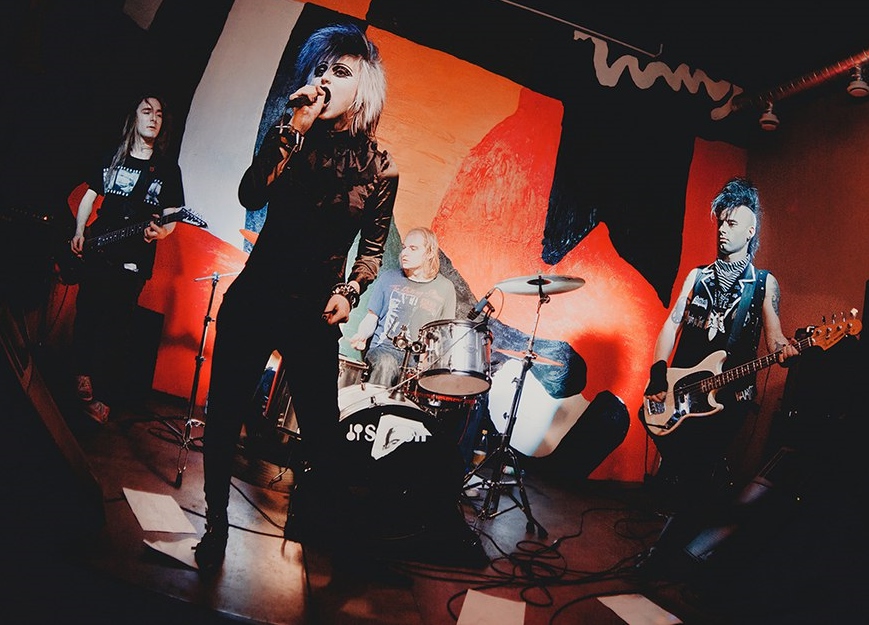
8. From Rebellious Echoes to New Waves: Post-Punk and Alternative’s Genesis
The embers of punk’s fiery explosion didn’t fade but rather transformed, influencing a wave of innovation throughout the 1980s. This period saw the birth of new wave, a genre that retained punk’s brevity and energy but infused it with a cleaner, often more melodic sound, incorporating synthesizers and elements of pop. New wave artists were often more sophisticated, embracing irony and stylish aesthetics while maintaining a rebellious edge.
Alongside new wave, post-punk emerged as a more experimental and introspective offshoot, taking punk’s anti-establishment spirit and intellectualizing it. Post-punk bands explored darker, more complex sonic landscapes, incorporating influences from art rock, funk, and dub, often with brooding lyrics and atmospheric textures. This movement expanded rock’s emotional and intellectual range with a depth distinguishing it from mainstream pop.
These movements collectively laid the groundwork for what would become ‘alternative rock.’ The term itself began to represent a broad church of bands who existed outside the mainstream, rejecting commercial conventions. They were the inheritors of punk’s independent spirit, crafting music that was often guitar-driven but infused with a myriad of influences, from jangle pop to industrial sounds.
The 1980s were a crucial crucible where these diverse sounds simmered, often in college radio stations and independent clubs, away from the glaring spotlight of major labels. It was a time of quiet revolution, where artists perfected their craft, patiently waiting for the moment when the alternative would become the dominant sound, forever changing the face of rock music.
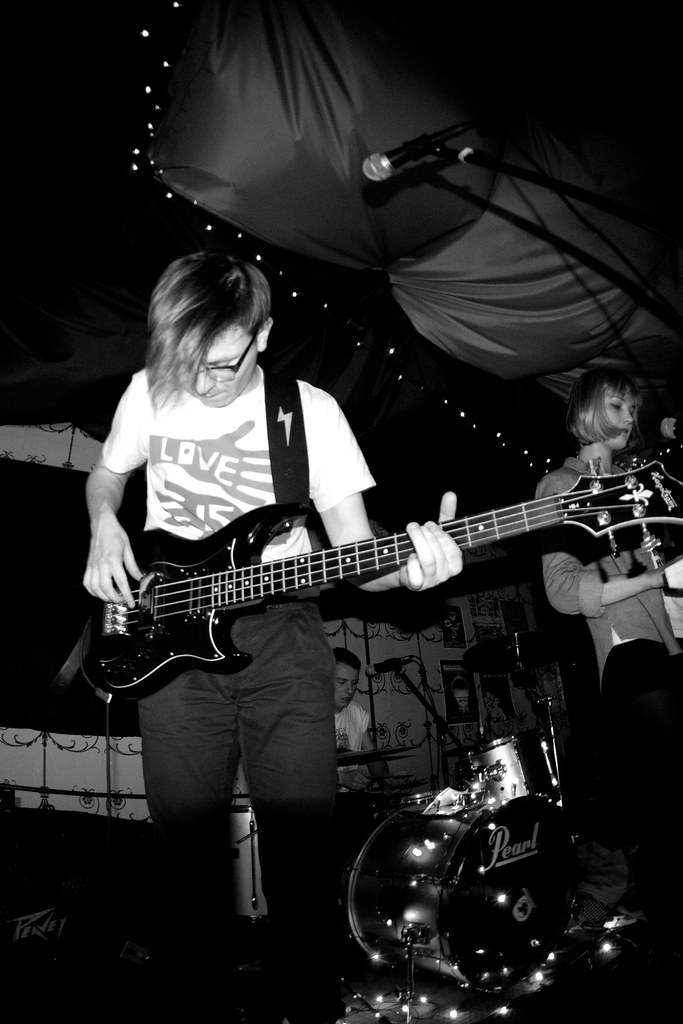
9. Alternative’s Ascension: The 90s Mainstream Breakthrough
The 1990s marked a monumental shift in the rock landscape, as alternative rock, once an underground phenomenon, emphatically broke into the mainstream. It was a decade where sounds cultivated in the indie scenes of the 1980s exploded onto global charts, redefining popular music and giving voice to a new generation. This wasn’t just a change in genre dominance; it was a cultural embrace of music that felt more authentic and angsty.
At the forefront of this alternative wave was grunge, a subgenre born in the Pacific Northwest. Grunge fused punk’s raw energy with heavy metal’s thick sound, often characterized by distorted guitars, melancholic melodies, and lyrics conveying disillusionment. Bands like Nirvana became global sensations, their raw, emotionally charged music connecting with millions and proving that rock could be both critically acclaimed and immensely commercially successful.
Across the Atlantic, Britpop emerged as a vibrant, distinctly British counterpoint to grunge’s introspection. Britpop bands celebrated British culture, drawing influences from 1960s pop, punk, and new wave, delivering catchy, guitar-driven anthems with swagger and optimism. Bands like Oasis and Blur became household names, solidifying Britpop’s place as a cultural touchstone.
Meanwhile, a broader indie rock scene continued to flourish, encompassing a vast array of styles prioritizing artistic integrity and independent spirit. Though often less commercially dominant, indie rock served as a vital incubator for innovation, constantly pushing boundaries. The 90s proved that rock, in its alternative guise, was evolving, finding new ways to capture the zeitgeist and remain culturally relevant.
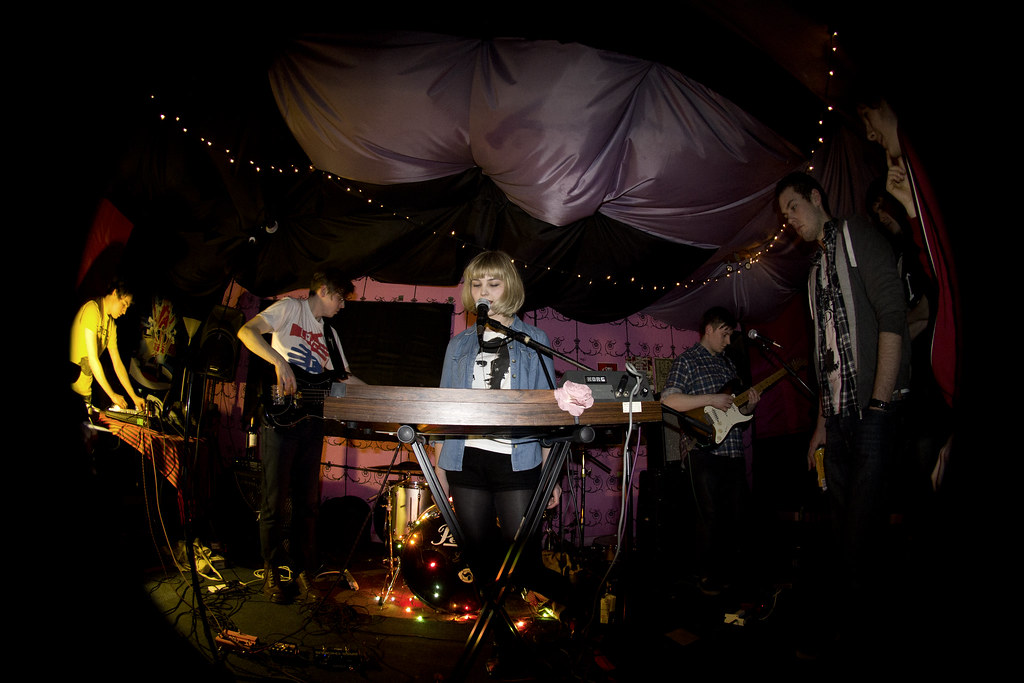
10. The Millennial Mosaic: New Fusions and Historical Echoes
As the new millennium dawned, rock music continued its relentless process of evolution and self-reflection, birthing fresh fusions while simultaneously looking back to its storied past. The genre demonstrated an uncanny ability to absorb influences from contemporary sounds, resulting in dynamic new subgenres that kept its pulse racing and its appeal fresh for a new generation. It was a period defined by both innovation and nostalgic reverence.
Pop-punk, for instance, surged in popularity, marrying punk’s speed and rebellious attitude with pop’s irresistible melodic hooks. This subgenre appealed to a younger demographic, offering anthemic songs about adolescence, heartbreak, and rebellion that were both accessible and edgy, showcasing rock’s evergreen appeal to youth culture. Bands like Green Day and Blink-182 cemented this sound as a defining force.
Beyond pop-punk, rock blended with other burgeoning genres. Electronic rock integrated synthesizers and electronic textures more deeply into rock’s guitar-driven framework, creating atmospheric and often danceable sounds. Rap rock and rap metal saw the aggressive convergence of hip-hop’s vocal delivery with heavy metal’s powerful riffs, appealing to audiences who craved a harder, more confrontational fusion.
Conscious attempts to revisit rock’s rich history also became a prominent trend. The garage rock revival of the 2000s embraced the raw, lo-fi aesthetic of 1960s garage bands, while the post-punk revival drew inspiration from the art-rock experimentation of the late 70s. These movements were re-interpretations, proving that rock’s foundational sounds held timeless appeal.
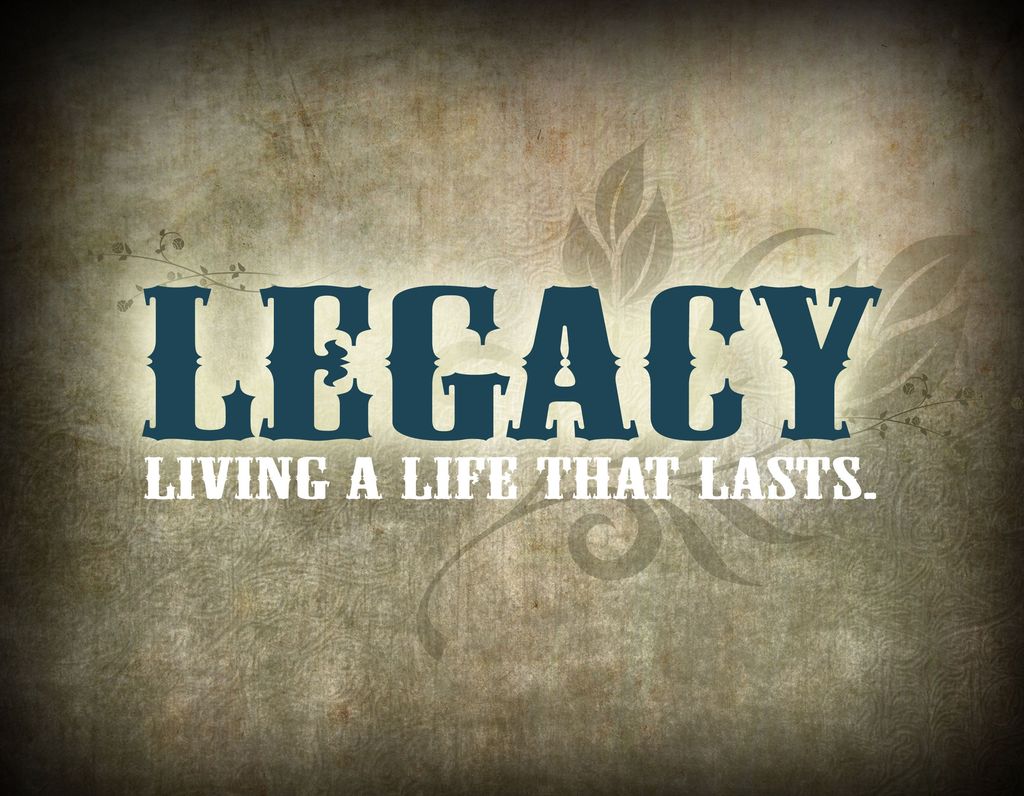
11. Rock’s Enduring Legacy: Culture, Politics, and a Modern Soundscape
In the 2010s, the landscape of popular music diversified dramatically, and rock, while still commercially successful, began to recede from its position as the pre-eminent genre in world culture. The rise of hip-hop and electronic dance music (EDM) commanded an ever-growing share of mainstream attention, influencing rock music itself. This wasn’t a demise, but a transformation, as rock continued to adapt, finding new niches and fusions.
The increased influence of hip-hop and electronic dance music could be seen in various rock expressions. The techno-pop scene of the early 2010s, for example, showcased greater integration of synthetic sounds and dance rhythms within rock’s framework. More recently, the pop-punk-hip-hop revival of the 2020s has demonstrated a fluid interchange, blurring genre lines and highlighting rock’s persistent ability to cross-pollinate and reinvent itself.
Beyond its musical forms, rock has always been more than just entertainment; it has profoundly embodied and served as a vehicle for cultural and social movements. From the mods and rockers to the widespread hippie movement and the broader Western counterculture, rock has consistently provided the soundtrack and rallying cry for societal shifts. The echoes of these movements continue to resonate today.
This deep connection to cultural movements persisted, with 1970s punk culture spawning influential subcultures such as goth, punk, and emo. Inheriting the folk tradition of the protest song, rock music has also been inextricably linked with political activism, challenging norms and driving changes in social attitudes towards race, , and drug use. It is often celebrated as an expression of youth revolt against adult conformity.
Yet, this revolutionary spirit has always existed alongside immense commercial success, leading to perennial accusations of ‘selling out.’ This tension between artistic integrity and financial viability is a defining characteristic of rock’s journey, a constant negotiation. Despite changing tides, rock’s legacy as a dynamic, impactful, and often rebellious art form remains undeniable, constantly adapting, challenging, and inspiring, proving its enduring place in the global cultural tapestry.
From its rebellious infancy born of a cross-pollination of genres to its current multifaceted landscape, rock music has proven itself to be far more than just a collection of songs. It’s a living, breathing cultural force, a mirror reflecting society’s anxieties and triumphs, its desires and its discontents. Each chord, each lyric, each seismic shift has contributed to a narrative of relentless innovation and enduring impact. So, the next time you hear a searing guitar riff or a defiant anthem, remember the intricate tapestry of hidden transformations and overt rebellions that forged this incredible sound. Rock isn’t just music; it’s a testament to the power of artistic expression to shape the world, one electrifying beat at a time. As it continues to evolve, drawing from new sounds and fresh perspectives, one thing remains certain: the spirit of rock will undoubtedly keep roaring on.



